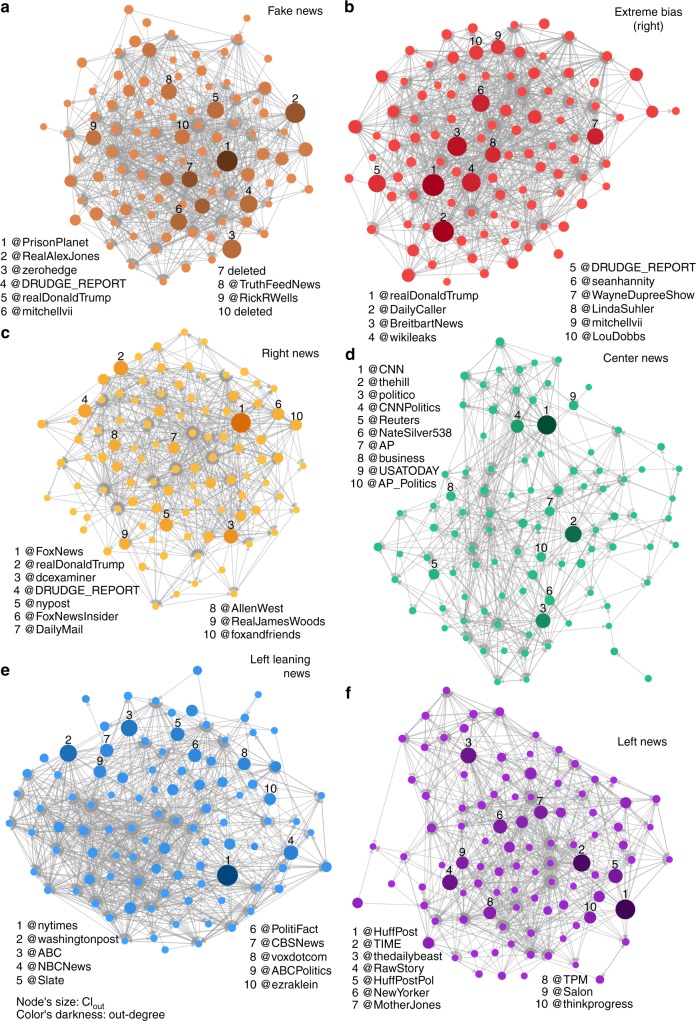Fig. 2.
Retweet networks formed by the top 100 news spreaders of different media categories. Retweet networks for fake news (a), extreme bias (right) news (b), right news (c), center news (d), left leaning news (e), and left news (f) showing only the top 100 news spreaders ranked according to their collective influence. The direction of the links represents the flow of information between users. The size of the nodes is proportional to their Collective Influence score, CIout, and the shade of the nodes’ color represents their out-degree, i.e. the number of different users that have retweeted at least one of her/his tweets with a URL directing to a news outlet, from dark (high out-degree) to light (low out-degree). The network of fake (a) and extreme bias (right) (b) are characterized by a connectivity that is larger in average and less heterogeneous than for networks of center and left leaning news (Table 2)

